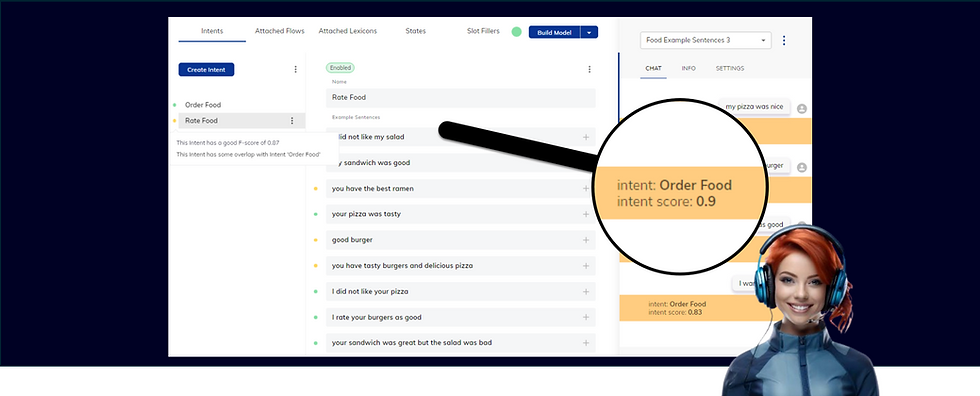Combining Intent-Based AI with Agentic AI in Cognigy
- Dr. Franco Arda

- 19 minutes ago
- 3 min read

In the evolving world of conversational AI, simply having an intent-driven bot is no longer enough. As user expectations grow—particularly in voice-based interactions—enterprises need to balance the precision of intent-driven AI with the natural, context-aware flexibility of Agentic AI. Platforms like Cognigy allow us to achieve this, and in this post, I will share practical examples and insights from real-world testing.
Understanding the Two Architectures
Intent-driven AI is task-focused. It recognizes predefined intents (like "billing question" or "file a complaint") and executes clear workflows.
Agentic AI, empowered by Large Language Models (LLMs), goes beyond intent matching. It understands, decides, and responds with more human-like empathy and flexibility.
At a high level:
AI Type | Characteristics | Example |
Intent-driven AI | Rule-based, predefined intents, rigid fallback behavior | "I'm sorry, I don't understand your question. How can I help you regarding customer support?" |
Agentic AI (with LLM) | Contextual, guided by role, human-like conversation management | "I'm sorry, but I can't provide information about Elon Musk as it is not related to my job as a Customer Support Specialist. If you have any questions about customer support or need assistance with an issue, please let me know." |
Why Combining Both Matters
If we rely purely on intent-based systems, we risk creating robotic and transactional experiences. Users who step even slightly outside the "happy path" will hit dead ends, especially in voice channels where tone and conversational flow are critical.
On the other hand, a pure Agentic AI without guardrails could easily start answering questions beyond its authority or company policy, leading to compliance risks.
Thus, the best architectures blend these two worlds:
Use intent-driven AI for structured, predictable tasks.
Use Agentic AI (LLM under guidance) for open-ended conversation handling, off-topic rejections, small talk, and emotional continuity.
Practical Test: "How is Elon Musk?"
To illustrate the difference, I tested a simple off-topic question in Cognigy:
Intent-driven AI Response:
"I don't understand your question. How can I help you in regards to customer support?"
Agentic AI Response (with guardrails):
"I'm sorry, but I can't provide information about Elon Musk as it is not related to my job as a Customer Support Specialist. If you have any questions about customer support or need assistance with an issue, please let me know."
Notice how the Agentic AI's answer is human-like, polite, and redirects gracefully without being robotic or abrupt.
This difference is crucial in voice interactions. A rough fallback breaks user trust instantly. A soft, empathetic redirection keeps the conversation fluid and professional.
Architectural Blueprint: Multi-Agent Setup
The most scalable design strategy involves:
Diagram Overview:
Visitor arrives -> Greeter Agent (Agentic AI)
Visitor’s intent identified (billing/complaint/etc.)
Smooth handoff to a specialized agent (intent-based)
This modular approach avoids overloading a single agent with too many roles and allows each module to be optimized independently.
In the excellent Cognigy video "Introducing Cognigy Agentic AI" Sebastian Glock from Cognigy calls this approach composite behavior, combining AI agents with pre-defined processes and getting the best of both worlds.

Personally, I love this approach. In Cognigy, I always start with Agentic AI and intent-based AI for specific tasks.
Final Thoughts
Understanding the subtleties between intent-driven AI and Agentic AI is critical as we design more human-centric, compliant, and efficient bots.
Testing shows clearly: Agentic AI shines when handling the "unknown" — politely, naturally, and professionally.
At the same time, intent-driven AI remains invaluable for operational execution where tasks are clear and predefined.
Blending both intelligently is the future of enterprise-grade conversational AI — and platforms like Cognigy make that future achievable today.




Comments